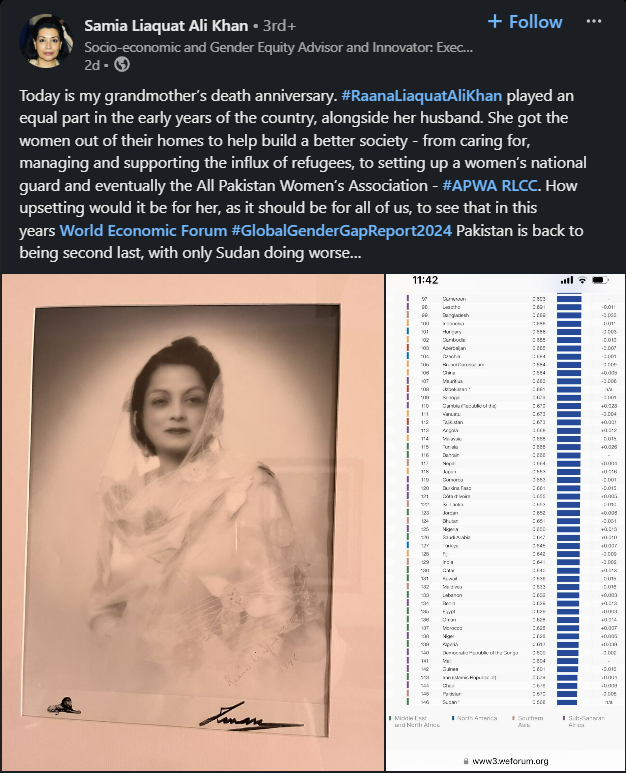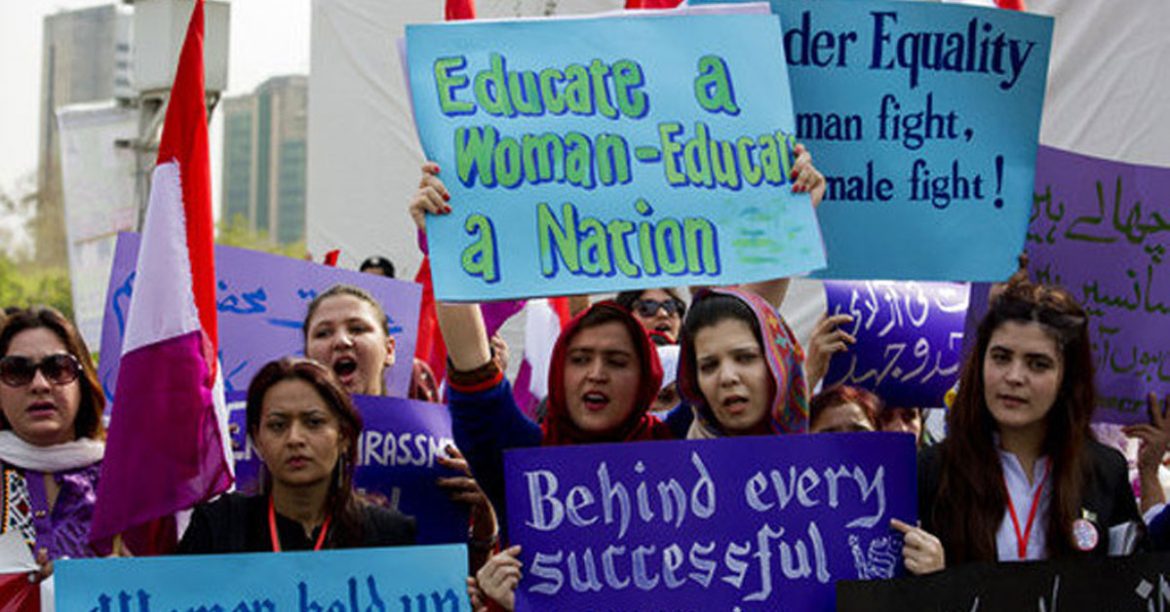- In 2024, Pakistan ranks 145th globally, closing 57% of its gender gap, dropping three places from last year mainly due to declines in Political Empowerment.
- Pakistan has significant economic gender disparities, with only 36% of the gap closed. Women hold less than 6% of senior leadership positions, and labor-force participation is just 30.4%.
- Despite improvements in educational enrollment since 2006, Pakistan still lags behind most countries in literacy, with a gender gap of 67.1%, and ranks 139th in Educational Attainment.
In 2024, the global gender gap score for the 146 countries analyzed stands at 68.5% closed. When comparing this to the constant sample of 143 countries from last year, the gap has closed by an additional 0.1 percentage points, rising from 68.5% to 68.6%.
Similarly, for the 101 countries consistently covered from 2006 to 2024, the gap has also improved by 0.1 points, reaching 68.6%.
Compared to last year, a larger number of economies have shown improvements in their gender parity scores, contributing to the narrowing of the overall gender gap: in 2024, 50.1% of the economies in the sample report increased scores, 6.1% show no change, and 43.8% report decreased scores.
The economies with the largest increases in scores are Ecuador (+5.1 percentage points), Sierra Leone (+4 percentage points), Algeria (+3.9 percentage points), Guatemala (+3.8 percentage points), and The Gambia (+2.8 percentage points). Conversely, the economies with the largest declines in scores are Rwanda (-3.8 percentage points), Bangladesh (-3.3 percentage points), Lao PDR (-3.3 percentage points), Bhutan (-3.1 percentage points), and Jamaica (-2.2 percentage points).
Pakistan Falls Back to Second Worst
This year, the bottom 10 include Morocco, Niger, Algeria, Democratic Republic of the Congo, Mali, Guinea, Iran, Chad, Pakistan and Sudan.
The economies with the lowest levels of economic gender parity include Bangladesh (31.1%), Sudan (33.7%), Iran (34.3%), Pakistan (36%), India (39.8%), and Morocco (40.6%). These countries have less than 30% gender parity in estimated earned income. Additionally, the labor-force participation rate for women in these economies is below 50%, with Iran having the lowest rate at 20.1%. A significant global issue is the underrepresentation of women in the workforce, particularly in senior and managerial positions, where parity is just 40.5%, the lowest score across the subindex.

Despite fluctuations, Southern Asia has improved its overall gender gap score by 3.9 percentage points since 2006. Six out of seven economies in this region rank outside the top 100, with scores ranging within a 12 percentage-point span from the highest-ranked, Bangladesh (99th overall), to the lowest, Pakistan (146th overall). Only four of these countries have closed two-thirds of their overall gender gap.
In professional and technical roles, gender parity is increasing, though there is significant variation between countries. Sri Lanka has a highly equitable workforce in this category (96.8%), while Pakistan shows a strong gender imbalance favoring men (35.8%).
Southern Asia ranks second-lowest in Educational Attainment, with a score of 94.5%, which is 2.5 percentage points lower than in 2023. This decline is due to large gender gaps in literacy and enrollment in highly populated countries like Pakistan (67% literacy) and Nepal (78% literacy). Nonetheless, the region has made significant progress since 2006, increasing educational gender parity by 13.4 percentage points, more than double the progress made by the Middle East, Northern Africa, and Sub-Saharan Africa regions.
Pakistan, with over 119 million women, ranks 145th on the 2024 index, having closed 57% of its gender gap. This marks a drop of three ranks and 0.53 percentage points from 2023, mainly due to declines in Political Empowerment, although there was a slight improvement in Educational Attainment. Pakistan’s low performance reflects substantial gender gaps in economic and political areas, as well as lagging in Education, Health, and Survival, where most economies have achieved parity.
Closing the Gender Gap: Shaista Ayesha Talks About British Council’s Women in Leadership Programme
The economic gender gap in Pakistan is just over one-third closed (36%), with the widest gaps in senior leadership roles (6.1%), where women hold less than 6% of positions. Income disparity is significant, with a 75.1 percentage-point gender gap (136th overall). While labor-force participation for women is relatively higher, it remains among the lowest overall (30.4%, 140th).
Despite progress in Educational Attainment since 2006, Pakistan still lags behind most economies in this subindex (139th). The literacy rate gender gap is particularly large at 67.1%. However, there is increasing gender parity in primary (87.6%), secondary (84.3%), and tertiary education enrollment (92.6%), with more women enrolling across these indicators, although progress is slower than in other economies. In Political Empowerment, Pakistan has 6.3% parity at the ministerial level and 19.3% in parliamentary seats, ranking 112th overall.
Share your thoughts with us in the comments below.
Stay tuned to WOW360.
